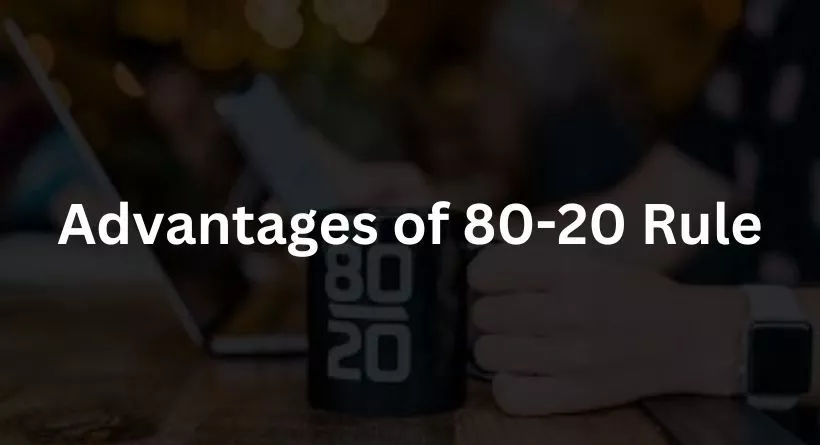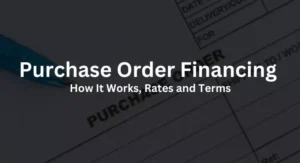
The 80-20 Rule: What Is It?
The Pareto Principle, also referred to as the 80-20 rule, is a well-known adage that states that, for every given occurrence, 20% of the causes (or inputs) account for 80% of the results.
The 80-20 rule in business aims to prioritize and discover inputs that have the potential to be the most productive. For example, managers have to concentrate most of their attention on aspects that are crucial to the development of their organization after such factors have been identified.
The 80-20 rule may be applied to any sector, even though it is commonly employed in business and economics. The 80-20 rule may be applied to personal economics, wealth distribution, spending patterns, and even adultery in intimate relationships.
How Do You Apply the 80-20 Rule?

The 80-20 rule may be thought of as straightforward cause and effect: 20% of causes (inputs) provide 80% of the results (outputs). The rule is frequently applied to highlight the fact that 20% of a company’s customers account for 80% of its revenue.
When seen this way, a business may find it beneficial to target its marketing at the 20% of customers who account for 80% of sales. By doing this, the business might be able to keep those customers as well as attract new ones who share their traits. But there’s more to the 80-20 rule than meets the eye.
You may also like reading: The Pareto Principle in AI — Just a Thought (is it?)
Core Principle
The 80-20 rule’s fundamental idea is to recognize an entity’s finest assets and make effective use of them in order to maximize value. For instance, a student need to prioritize studying the sections of a textbook that would help them the most for an impending test. However, this does not mean that the learner should disregard the remaining sections of the textbook.
Misinterpretations
It’s possible that many are unaware that the 80/20 rule is a concept rather than an inflexible mathematical formula. Moreover, the percentages don’t have to add up to 100%. Simply simple, inputs and outputs represent various units. These units’ percentages don’t have to sum up to 100%. What counts is the idea that underlies the regulation.
The 80-20 rule is interpreted incorrectly in another way. Specifically, the idea is that if 20% of inputs are critical, then the remaining 80% must not be. This is an error in logic. Even in the event that the 20% is decided to be prioritized, the 80% may still be significant.
Background of the 80-20 Rule
The Pareto principle, also referred to as the 80-20 rule, is used in Pareto analysis. It was initially applied in macroeconomics to characterize the early 20th-century wealth distribution in Italy. Italian economist Vilfredo Pareto, well recognized for his theories on Pareto efficiency, first presented it in 1906.
In his garden, Pareto discovered that 20% of the pea pods produced 80% of the peas. By demonstrating that 20% of the Italian people held 80% of the country’s wealth, Pareto extended this idea to the field of macroeconomics.
A well-known authority on operations management, Dr. Joseph Juran, used the 80-20 rule to improve quality control in commercial manufacturing in the 1940s.
He proved that 20% of manufacturing procedure flaws accounted for 80% of product errors. A company might raise the general caliber of its output by concentrating on and eliminating the 20% of production issues. This is what Juran called “the vital few and the trivial many.”
Advantages of 80-20 Rule

The 80-20 rule is fundamentally valid, if not mathematically correct, based on a wealth of anecdotal data, despite the lack of scientific investigation supporting or refuting its validity.
Salespeople’s performance in a variety of industries has shown that applying the 80-20 rule may be successful. Furthermore, external consultants have successfully used the 80-20 rule to their operations when utilizing Six Sigma and other management techniques.
Example of the 80-20 Rule
Carla, a Harvard graduate student, was doing an assignment for her course on digital communications. The assignment was to start a blog and track its progress throughout the duration of the semester.
The website was built, designed, and launched by Carla. The lecturer evaluated the blogs in the middle of the semester. Compared to the blogs of her classmates, Carla’s blog had the least amount of visitors even though it had considerable prominence.
Conclusion
In conclusion, the 80-20 rule serves as a valuable tool for optimizing productivity and achieving success. By understanding its principles and applying them judiciously, individuals and businesses can unlock hidden potential and pave the way for greater efficiency.
FAQs
Is the 80-20 rule applicable only to business?
No, the 80-20 rule can be applied to various aspects of life, including personal development, time management, and relationships.
Can the percentages in the 80-20 rule vary?
Yes, the percentages don’t have to add up to 100%. The key is to recognize and prioritize the most impactful elements.
Is there scientific evidence supporting the 80-20 rule?
While scientific validation is limited, numerous success stories in different fields attest to the practical effectiveness of the 80-20 rule.
How can individuals apply the 80-20 rule in their daily lives?
Identify the key tasks or factors that contribute significantly to your goals and focus on optimizing those for maximum impact.
Can the 80-20 rule be used in teamwork and collaboration?
Absolutely. Recognizing the most influential contributors in a team and allocating resources accordingly can enhance overall team performance.





